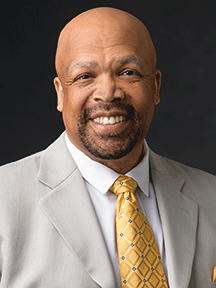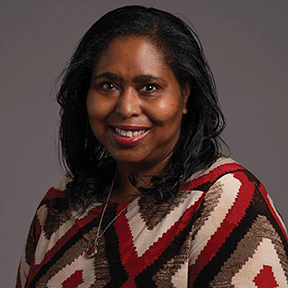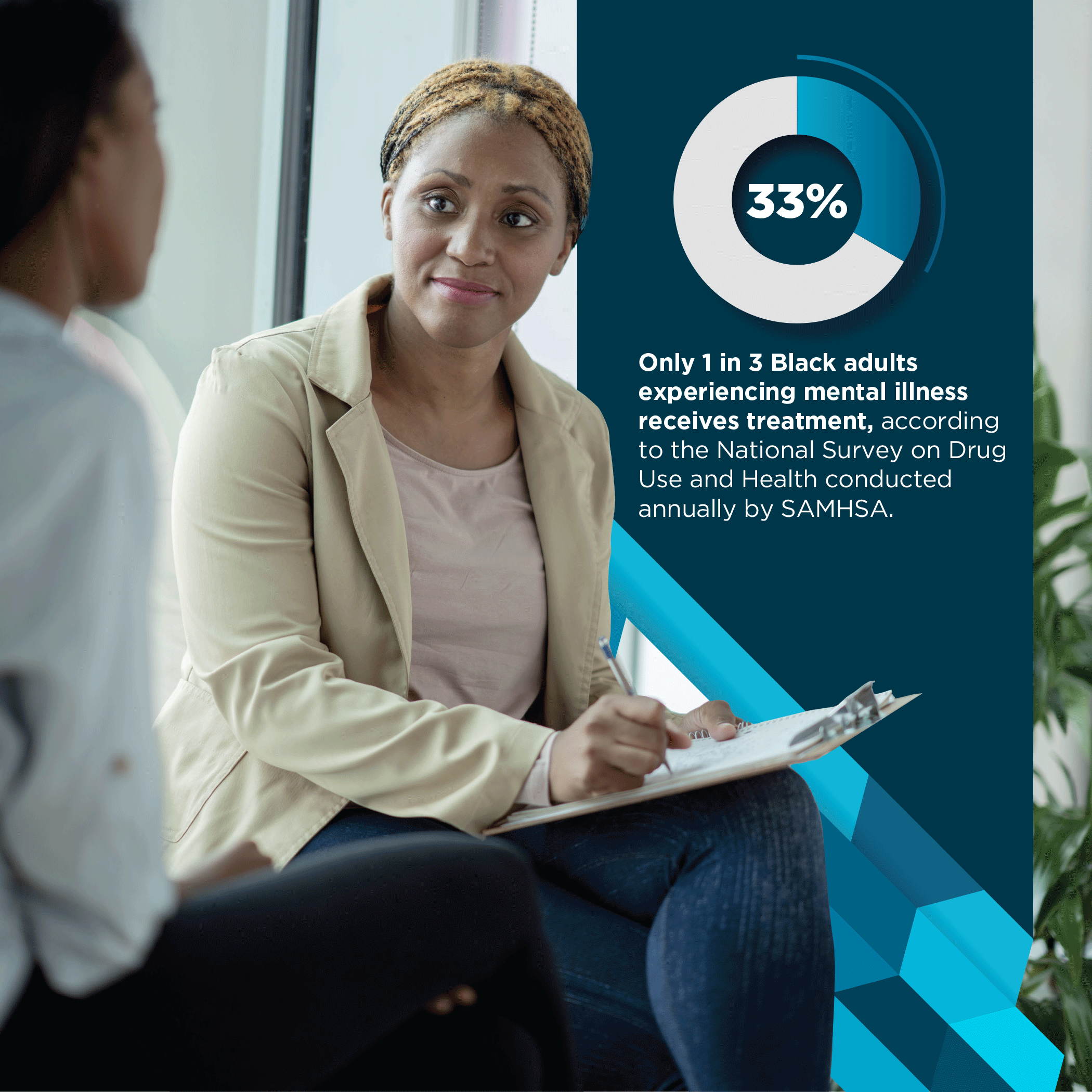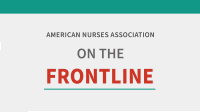Resources to better understand racism in nursing
The COVID-19 pandemic has brought to light critical mental health disparities for Black, indigenous, and people of color (BIPOC) in the United States, in addition to existing disparities in care. Racism has been shown to contribute to stress and other mental health issues. Nurses whose clinical work and research have borne this out are taking opportunities to increase awareness of Black mental health needs and begin to close those gaps.


“When you think about all of the factors that influence someone’s mental health, racism is a factor that Black people can’t divorce themselves from,” said Christopher L. Coleman, PhD, MS, MPH, APRN-BC, ACRN, FAAN, professor and Mark and Maureen Miller Head and associate dean of clinical education at the Purdue University School of Nursing in West Lafayette, IN. Racism in every space—home, school, work, community—and in the form of both daily microaggressions and systemic bias and discrimination starts accumulating from the moment a person enters society, with no way to avoid its effects, Coleman added.
The American Public Health Association declared racism a public health crisis in 2020, an important first step toward meaningful change.
“We know that racism is linked to comorbidities such as hypertension and other chronic diseases, stomach issues, headaches, and depression,” Coleman said.
The Health and Human Services Office of Minority Health reported that Black adults in the United States are more likely than White adults to report feelings of sadness, hopelessness, and worthlessness all or most of the time. Despite the need, only 1 in 3 Black adults experiencing mental illness receives treatment, according to the National Survey on Drug Use and Health, conducted annually by the Substance Abuse and Mental Health Services Administration (SAMHSA).
“Ongoing racism causes changes in the emotional health of BIPOC [individuals] and can lead to generational trauma,” said Tanya Sorrell, PhD, MS, RN, PMHNP-BC, an associate professor at Rush University Medical Center in Chicago. “That in turn increases the risk of developing mental health and substance use issues and contributes to structural issues like poor housing and education,” she said.
Identifying and acknowledging barriers
A complex web of reasons keeps Black adults from accessing mental healthcare. For those living in poverty, lack of transportation, insurance, and limited or no internet access can create challenges. For those working blue- or pink-collar jobs (traditionally considered women’s work), overtime and night shifts can make getting to appointments difficult, as most mental health facilities and therapists operate on 9-to-5 schedules.
Sorrell, an ANA-Illinois member, hears patients saying, “I know that I’m depressed, I know I’m having problems sleeping, but I don’t have time for therapy. I’m trying to survive and keep my family afloat.”
For many, seeking mental health treatment is complicated.
Even when a patient can access mental healthcare, they may not feel comfortable discussing their struggles, particularly substance use or adverse childhood events, due to cultural stigma about shame and privacy.
In the article “African American men and women’s attitude toward mental illness, perceptions of stigma, and preferred coping behaviors,” published in Nursing Research, author Earlise Ward, PhD, and colleagues found that while the individuals surveyed were aware of some of the symptoms and causal factors of mental illness, they were very concerned about stigma associated with mental illness. However, most respondents reported being somewhat open to seeking mental health services.
Distrust of the healthcare establishment also contributes to the reluctance to seek care.
“It’s been documented that African Americans often receive substandard care in hospital settings from nurses, physicians, and other healthcare providers who may have biases,” said Coleman, an ANA member and alumni of the Minority Fellowship Program (MFP) at ANA.
The long history of mistreatment by the healthcare establishment contributes to distrust from many in the Black community.
Unfortunately, psychiatry and psychology have played a significant role in this history. In 2021, the American Psychiatric Association (APA) Board of Trustees offered an apology to its members, patients, their families, and the public for the early psychiatric practices that created inequities in clinical treatment. These disparities resulted in limited access to quality psychiatric care for BIPOC patients. The apology statement explained that “since the APA’s inception, practitioners have at times subjected persons of African descent and Indigenous people who suffered from mental illness to abusive treatment, experimentation, victimization in the name of ‘scientific evidence,’ along with racialized theories that attempted to confirm their deficit status.
Also in 2021, the American Psychological Association issued a similar apology, stating that it had “failed in its role leading the discipline of psychology, was complicit in contributing to systemic inequities, and hurt many through racism, racial discrimination, and denigration of people of color.”
ANA adopted a Racial Reckoning Statement in June 2022 to acknowledge its own past actions that have negatively impacted nurses of color and perpetuated systemic racism (nursingworld.org/RacialReckoningStatement).
Today, racism can trigger unconscious bias from providers that may result in reduced access to health-enhancing opportunities and resources for nondominant racial and ethnic groups, David R. Williams, PhD, MPH, noted in his article, “Stress and the mental health of populations of color: Advancing our understanding of race-related stressors,” published in the Journal of Health and Social Behavior.


For example, certain features of electronic health record (EHR) systems can stigmatize patients, said Sorrell, who’s a member of the MFP National Advisory Committee. If a patient is a “no-show” once or twice, an EHR will note it and may suggest double booking that patient. This can influence a provider’s implicit or explicit biases towards a patient they haven’t even met.
“How engaged will the provider then be in the patient’s treatment and services,” Sorrell asked. “Seeing that note affects how the provider interacts with, discusses, diagnoses, and treats that patient.”
Championing change
Acknowledging and addressing the effects of racism on mental health begins with education.
“One of the things we’re trying to do in nursing schools and programs is have the conversation about race with our students and show the impact of racism,” Coleman said. For example, he recommends teaching nursing students about redlining, the practice by which cities and local governments deny services such as mortgages, insurance, and other financial services to residents of certain areas, based on their race or ethnicity, and how that impacts access to healthcare.
At Rush University Medical Center, all students take Sorrell’s classes on the racial history of psychiatry and cultural care needs in psychiatry and cultural care needs related to substance use. Sorrell’s research indicates that training providers on the ongoing microaggressions and macroaggressions seen against BIPOC patients have made notable improvements in how cultural care services are provided. An article detailing these findings is forthcoming.
Developing new care delivery methods with the needs of BIPOC populations in mind is one of the most effective ways to increase access to care, according to both Coleman and Sorrell.
One benefit that arose from the devastation of the COVID-19 pandemic, Coleman said, was that healthcare providers and organizations learned they could provide services more efficiently and reach more people. “We discovered mental health therapy can be done virtually. And people are more comfortable because they can stay home,” he said. “As long as they have privacy, they can talk to their therapists via telehealth modalities. It’s made a huge difference.”
Sorrell has long advocated for the expansion of telehealth services, which she has provided since 2005. “Telehealth is a way to decrease the problems of unreliable transportation and childcare. Sadly, it took a pandemic to advocate for its utilization,” she said. The Centers for Medicare & Medicaid Services has extended coverage of telehealth through the end of 2023, and Sorrell hopes it will become permanent.
“We know that there are ways to make systemic changes,” she said. “We have to continue to advocate for them.”
— Elizabeth Moore is a writer at ANA.
American Nurse Journal. 2023; 18(2). Doi: 10.51256/ANJ022338;
References
Ward EC, Wiltshire JC, Detry MA, Brown RL. African American men and women’s attitude toward mental illness, perceptions of stigma, and preferred coping behaviors. Nurs Res. 2013;62(3):185-94. doi:10.1097/NNR.0b013e31827bf533
Williams DR. Stress and the mental health of populations of color: Advancing our understanding of race-related stressors. J Health Soc Behav. 2018;59(4):466-85. doi:10.1177/0022146518814251XXX





















2 Comments. Leave new
I love learning nursing techniques.
We’re glad this article was able to provide this knowledge for you!